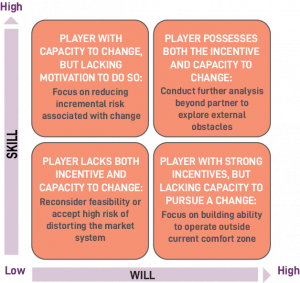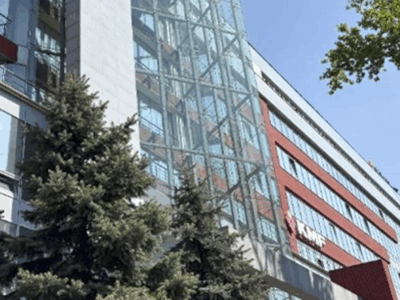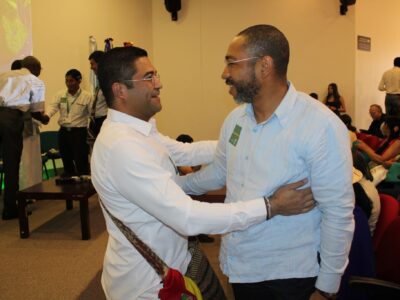
Many agricultural market systems development (MSD) programs have been turning their attention toward the inclusion of women, youth, and other marginalized groups as critical to not only achieving development impacts for these groups but also generating more competitive, inclusive, and resilient market systems. While robust evidence around “what works” is still limited, many agricultural MSD programs are designing, implementing, adapting, and learning from approaches aimed to bring about more effective inclusion of women and youth. In a multi-part blog series, we will explore these themes as they relate to ACDI/VOCA’s own work, sharing practical experience, challenges, and successes to further learning.
As we continue our Making Markets Inclusive Series, this third blog offers guidance to practitioners on how to advance inclusion outcomes during co-creation with the private sector. As previously discussed in the first blog of the series, a key finding from the Feed the Future Advancing Women’s Empowerment Program research was that being intentional about inclusion in all phases of an MSD program leads to positive impacts for women and youth. After sharing experiences from the Zambia Enterprise Development and Growth Enhanced Activity on designing for inclusion in the second blog of the series, we now turn our attention to advancing inclusion during the co-creation process — a strategic opportunity in MSD programs to collaborate with the private sector to facilitate systemic change.
What are inclusion considerations during the co-creation process?
USAID defines co-creation as “a design approach that brings people together to collectively produce a mutually valued outcome, using a participatory process that assumes some degree of shared power and decision-making.” Co-creation is a powerful approach that has the potential to create transformational partnerships with the private sector and catalyze changes in business and social norms and network structures. The co-creation process broadly includes five phases:

ACDI/VOCA places significant emphasis on inclusion considerations during each phase of co-creation. This can best be done through ensuring the process itself is inclusive and using the co-creation process to create inclusive outcomes. An inclusive co-creation process ensures that the right team members advise and participate in the process as well as the right partners. Which team members participate often depends on the co-creation approach and process, but, in general, markets systems specialists, relationship managers, monitoring and evaluation staff, and gender and social inclusion (GSI) advisors should all be involved, as each contributes to the process from their unique area of expertise. This is essential to the second part of creating inclusive outcomes with partners.
Why is inclusion important during co-creation?
Co-creation presents a strategic opportunity for programs to leverage the capacity and incentives of the private sector to address GSI challenges and integrate GSI into the design of a partnership to advance business interests and development outcomes. Throughout ACDI/VOCA’s MSD programs, research and analysis typically begins prior to the co-creation process and forms the base for facilitating interventions with the private sector to achieve program results and systems change. This is partially because implementers should have a good understanding of why the system is operating the way it is and the potential leverage points that could result in creating systems-level change prior to considering who to partner with and how to partner with them. Additional research can inform the “ask” from the private sector. Inclusion considerations should be at the heart of the co-creation process because they have the potential to create inclusive results, such as increased jobs for women or youth, as well as prompt transformational changes that address larger GSI gaps or root causes for exclusion in market systems. However, for programs to achieve such results, inclusion must be intentionally woven into co-creation from the beginning and throughout the process.
How do I integrate inclusion in co-creation?
Below are tips on how to integrate inclusion into the first half of the co-creation process.

Phase 0: Determine Purpose and Approach: During this phase of co-creation, teams should think about the inclusion outcomes they want to achieve, how the co-creation process fits in with desired changes to make a market system more inclusive, and what they want their portfolio of partnerships to look like to ensure their interventions will achieve inclusive systems change.
For example, programs can use the Will-Skill Framework to assess a potential partner’s willingness to perform a proposed intervention and whether it requires a mindset change or a capacity change on their part. We’ve typically found that actors on the high skill side (even if they have low willingness) are good candidates for making the business case for inclusion, as it can be a great tactic for shifting mindsets. This matrix can also be used to identify a range of partners collectively within a program to address different layers of GSI outcomes.
Phase 1: Selection of Partners: There are different ways that inclusion can be built into partnership selection. This includes identifying women- or youth-owned small- and medium-sized enterprises (SMEs) during the co-creation process through networks or associations. It also includes creating the right incentives and mechanisms for firms to invest in inclusion outcomes and ensuring inclusion criteria are a foundation of the partnership selection process. This criteria includes but is not limited to the number of women or youth reached through a partnership.
For example, the USAID Enterprise Competitiveness Project in the Kyrgyz Republic considers the context and channels for advertising expressions of interest to ensure that women- and youth-owned business are more likely to respond. The USAID Enterprise Competitiveness Project also has exclusive calls for women- and youth-owned SMEs and adjusts the expected outcomes they may be held responsible for, as these firms are smaller and may not be as able to create the same number of jobs as larger firms, for example.
Phase 2: Preparation for Co-Creation: To prepare for integrating inclusion within co-creation processes, it’s important to develop staff capacity to communicate the social and economic value of inclusion to private sector actors. This includes developing strategies for preparing GSI information about gaps or market opportunities from the research phase or points about the business case and how to share that information with partners to increase their awareness and brainstorm ideas for the next phase.
Additionally, it is important to prepare staff to use business language and make the business case when discussing GSI challenges and opportunities. Working with staff to prepare them to make the business case for inclusion in terms partners understand is important for motivating and creating shared value; using development jargon and pointing to project GSI targets is not a compelling case for private sector partners.
For example, the Agriculture and Food Systems Development Activity in Myanmar conducted a series of private sector engagement trainings with staff to prepare for co-creation, including a training on making the inclusive business case to increase the number of market actors that integrated women, youth, and ethnic minorities into their business models.
For More in the Making Markets Inclusive Series
Read the first post in the series, “How Market Systems Development Programs Can Boost the Inclusion of Women, Youth, and Other Marginalized Groups,” published March 2, 2021.
Read the second post in the series, “Designing for Inclusion,” published March 29, 2021.
Read “Making Markets Inclusive: Tips for Advancing Inclusion Through Co-Creation with the Private Sector, Part 2,” published May 27, 2021
Comments







